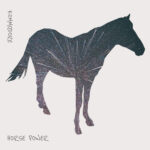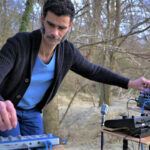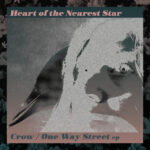Jean-Philippe Ruelle’s latest single, Callpeax, is an extraordinary dive into the world of chillstep, downtempo, and electronic experimental music, blending atmospheric sounds with a clear message of peace. It’s a masterful composition that channels both the serene and the profound, intricately weaving layers of sound and rhythm into a piece that leaves a lasting impression.
From the very first moments of Callpeax, listeners are pulled into a mysterious and evocative sonic landscape. The track’s inspiration comes from the eerie phenomenon of number stations—broadcasts of seemingly random sequences of numbers. Ruelle uses this concept to convey the message “Dare to peace,” encoding it into numerical sequences that are softly embedded within the song, adding a sense of cryptic depth. As the numbers are translated into various languages, the effect is haunting and hypnotic, contributing to the overall immersive atmosphere.
The rhythmic structure of Callpeax is one of its most striking elements. Built around downtempo beats, the rhythm flows with a calm yet steady pulse, characteristic of chillstep, but with an experimental twist. The bassline, deep and resonant, serves as the backbone of the track. Its subtle groove doesn’t overpower the other elements, but rather, it lays down a steady foundation for the evolving soundscape. The bass adds warmth and depth, giving the track a grounded feel even as the melodies rise and swirl above it.
The synth work is where Callpeax truly shines. Ruelle’s use of warm, lush synth layers draws clear influence from pioneers like Vangelis and Jean-Michel Jarre, but there’s also a modern edge reminiscent of Air. The synths wash over the listener in waves, creating a sense of expansive space, as if floating in a serene, cosmic environment. These melodies are often soft and understated, allowing the listener to sink into the music’s meditative quality, yet they occasionally burst forth with more intensity, especially as the track builds towards its climax.
Throughout Callpeax, there’s a sense of constant evolution. The track begins quietly, almost introspectively, with ambient tones and sparse rhythms, but as it progresses, it grows in complexity and emotion. The layering of sounds becomes richer, with brass elements adding an orchestral grandeur that elevates the track. These deep brass sounds contrast beautifully with the airy synths, giving the track a cinematic feel. It’s as if Ruelle is guiding the listener through different emotional states, from calm reflection to an explosive and uplifting conclusion.
The climax of Callpeax is perhaps its most emotionally charged moment. As the layers of synths, rhythms, and bass culminate, the track reaches an emotional peak that feels both cathartic and powerful. It’s a moment of awakening, as if Ruelle is urging listeners not only to appreciate the beauty of the music but also to internalize its message of peace. The fusion of electronic elements with organic sounds creates a sense of unity, reflecting the track’s deeper thematic purpose.
Overall, Callpeax is a standout piece of electronic music that successfully blends experimental sounds with a clear emotional narrative. Ruelle’s ability to balance complex soundscapes with accessibility is impressive, making the track a rewarding listen for both casual fans of electronic music and those who appreciate deeper sonic exploration. It’s a journey through sound and emotion, advocating for peace in a way that feels both timely and timeless.
We are thrilled to host this track on our webzine, and we look forward to seeing how Callpeax continues to resonate with listeners. Jean-Philippe Ruelle has crafted a high-quality, thought-provoking piece that deserves recognition not only for its technical proficiency but also for its message of unity and peace.






